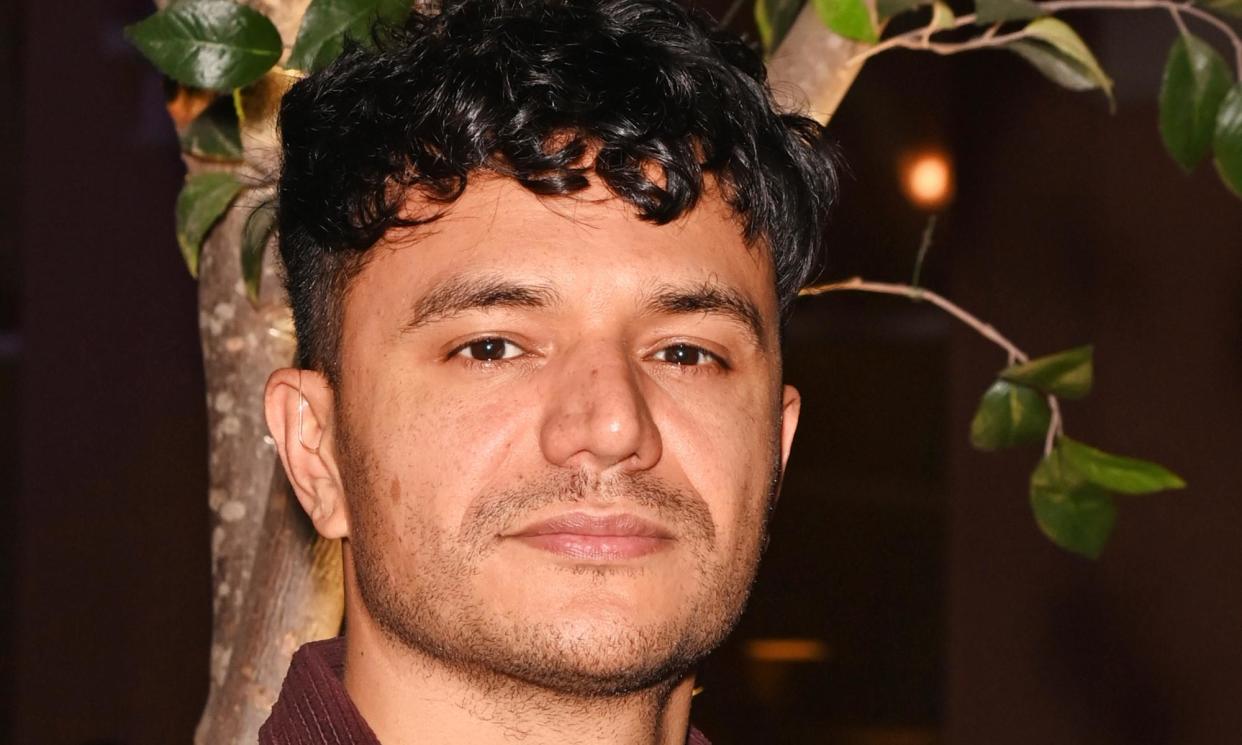On my radar: Raymond Antrobus’s cultural highlights

The British poet and educator Raymond Antrobus was born in east London in 1986. He gained an MA in spoken word education from Goldsmiths, University of London and published his first poetry pamphlet in 2012. His 2018 book The Perseverance won both the Ted Hughes award and the Rathbones Folio prize. He has also published two children’s picture books, Can Bears Ski? and Terrible Horses. Antrobus lives in Margate with his wife, Tabitha, a photographer and art conservator, and their son. His new poetry collection Signs, Music, exploring masculinity, race, deafness and fatherhood, is published by Picador on 12 September.
1. Art
Ed Clark’s Rainbow 2, Turner Contemporary, Margate
When I first saw this painting by [American abstract expressionist painter] Ed Clark in a recent show, I cried and I couldn’t explain why. I had to keep going back to it. Taking photos of each part of the canvas, I realised there’s a detail that makes every other element of the painting fall into place: a smudge of yellow which you realise is the sun, so you’re looking at a sea horizon. It has a visceral energy, but also a stillness. It was the perfect depiction of the energy I’ve found living by the sea.
2. Song
I love this new song. I’m constantly listening to it. The first time I heard it I was on my way somewhere, and when the chorus hit I stopped walking and sat down and listened to the rest of the song, just being still. The structure is really cohesive but there are so many different elements and influences. I can hear a bit of Charles Mingus, and a Malian twang, and a southern soul element in his voice. Anyone who listens to African music and jazz will really connect with this. It’s such a soothing, peaceful song.
3. Theatre
Nadia Nadarajah in Antony and Cleopatra at the Globe
Nadarajah is one of the most accomplished deaf artists and actors in the UK. Over the years I’ve seen her translating English language poetry into British Sign Language and performing in D/deaf-centric spaces. So it’s really powerful that she’s now playing Cleopatra on a mainstream stage – she, Nadeem Islam and Zoe McWhinney absolutely smash their BSL scenes. The sassy, sexy, warrior-intensity of Cleopatra is perfectly suited for skilled BSL/Visual Vernacular performance. It’s a historic moment, and such an incredible opportunity for people to see what BSL looks like when conveying the power of Shakespeare.
4. Poetry
Gboyega Odubanjo’s illustrated sequence from Adam
The New Yorker published an extract from the late Gboyega Odubanjo’s book, Adam, which I really do see as a modern-day Waste Land. Both poems use lots of code-switching and go off into other languages – Odubanjo uses London vernacular but also Yoruba. That’s coupled with a heightened lyric, all-seeing mode and a voice that is as futuristic as it is ancient. I just love it, and the New Yorker’s presentation of the sequence, with illustrations between the poems, is amazing. If you need convincing to buy the book, this is a really good introduction.
5. Radio
Front Row’s James Baldwin centenary episode on BBC Radio 4
I loved this James Baldwin centenary special with Colm Tóibín, Mendez and Bonnie Greer. I reread a lot of Baldwin’s work during the pandemic. He was such a complex person and people often hyperfocus on, say, his sexuality or his race, but this discussion was more intersectional, with some beautiful anecdotes. It gave emotional and literary context, and with the race riots that recently swept England, it was a reminder that Baldwin is such a guiding light in a time like this, for people who are seeking comfort, clarity, but also a kind of articulated rage.
6. Book
Touch the Future by John Lee Clark
I’ve been giving this book to many people since it came out. It’s a manifesto in essays by deafblind American poet John Lee Clark and it’s required reading for teachers, carers and anyone interested in how marginalised groups can find autonomy on their own terms. It positions the discussion of access away from this daunting, boring, administrative thing into an opportunity for creativity. The last essay is about an ideal arts exhibition for someone who’s deafblind, challenging artists to tap further into the tactile elements of their art-making. It’s a landmark text.


